Bliss Perry was a pioneer in American literature. He taught at Williams College, Princeton, and Harvard and edited the works of Ralph Waldo Emerson, among others. But I wouldn't know anything about Professor Perry if he hadn't written a book called Fishing with a Worm.
His short book—published in 1916—begins with an indictment of the fishing gene:
A defective logic is the born fisherman's portion. He is a pattern of inconsistency. He does the things which he ought not to do, and he leaves undone the things which other people think he ought to do.
This is, I suspect, the sort of thing my wife might have chiseled upon my headstone. Motivated by the simple observation that “fly-fishing has had enough sacred poets celebrating it already,” Perry closes his extended parable with this:
For life is not easy, after all is said. It is a long brook to fish, and it needs a stout heart and a wise patience. All the flies there are in the book, and all the bait that can be carried in the box, are likely to be needed ere the day is over. But, like the Psalmist's “river of God,” this brook is “full of water,” and there is plenty of good fishing to be had in it if one is neither afraid nor ashamed of fishing sometimes with a worm.
More Like This
I can't remember how or when I stumbled onto this book, but I can remember reading it at least once every winter since. And though it had been many years since I baited a hook with a worm, I decided one winter to do the next best thing: tie a dozen San Juan worms.
I can’t think of a fly that’s easier to tie than the San Juan worm. I can tie one in about the same time it takes to impale a real worm on a hook. The only downsides to these “flies” are that they take up a lot of space in my fly box, and some fly anglers—the type of folks Perry said “always fish as if they were being photographed”—might look down their noses at me.
I wasn't sure if or when I'd fish my worms that year, but after a hard rain a few days before the trout season opener, a legion of small earthworms scattered across my driveway. “Hey, Archimedes,” I said to myself, “your San Juan worms might be the perfect match for this hatch.”
On opening day on a remote river in the Ottawa National Forest, I tied one of my worms in tandem with a size 16 black stonefly nymph I bought from an old guy at the Laughing Loon Emporium in Iron River.
“Most people fish a big fly for this bug, but these small ones work much better,” he told me. I'd already tied some in that size, but I have a simple arrangement with this man when I visit his store. He answers my “Where's the best place to catch a trout in Iron County?” question, and I buy a dozen of his flies.
Like the guy predicted, most fish took the small stonefly. I'm convinced, though, that my orange chenelle earthworm attracted them to the rig, and a few fish actually ate it.
Two days later, I tried my worm and stonefly tandem on a local stream. Because all the nearby rivers were still too cold to be “on,” I hiked into a remote location where I rarely fish after things get going. Two-and-a-half miles each way is just too much of a journey when shorter hikes are more productive. Once on the river, I flipped my rig into the likely spots and caught enough brook trout to keep me from thinking about the long hike out. On a drift behind a substantial rock in the middle of the stream, I lifted my rod for what I believed was a light take, and—with a quick forward surge—a heavy fish ripped the stonefly nymph from my line. It could have been a large brook trout, but with its unobstructed flow to Lake Superior, this river gets a spring run of steelhead. I knew those giant rainbows could be there, but I wasn’t prepared to put up a fair fight. Planning to catch native brook trout, I'd brought a 4-weight bamboo rod with 4X tippet.
People who know me well say that—at times—I tend to overthink things. This was one of those times. What if that was a steelhead? I can’t land one of those with this rod and 4X tippet. I’d have better luck putting out a grease fire with a squirt gun. I have some small stoneflies similar to the ones the guy at Laughing Loon sold me, but they aren't exactly the same, and I only have one of his left to use as a pattern. Maybe I should walk around this hole and avoid losing that last fly.
I know about my tendency to overthink, though, so I fought off my demon, tied on the fly, and continued to cast. A dozen casts later, a fish bent my rod in a way that no brook trout in Michigan has ever bent a rod nor ever will. The steelhead hurtled its body out of the river and then darted in the general direction of its summer home in Lake Superior. Luckily, this section of the small river is uncharacteristically straight, and its narrow flow contained one downed tree, but few other line-breaking obstructions.
When I landed the fish and saw that she had taken the worm, I thought once again about a passage from Professor Perry's unique book:
But angling's honest prose, as represented by the lowly worm, has also its exalted moments. “The last fish I caught was with a worm,” says the honest Walton, and so say I.
And so say I.




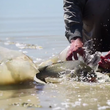
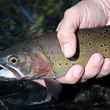
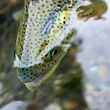









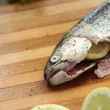




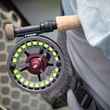
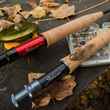




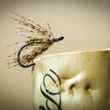




Comments
Russell Symons replied on Permalink
From the other side of the pond. I must read that book and your interpretation of it raised more that a wry smile.
Pages